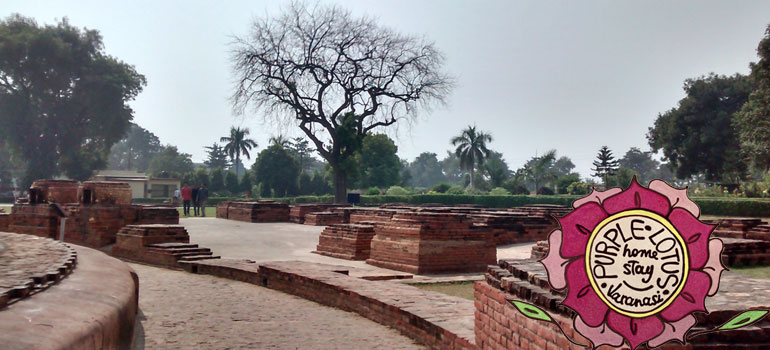Sarnath - Sacred Tour Destination - Varanasi India
A renowned pilgrimage and tourist destination in India, Sarnath is located at a distance of 8 km from Varanasi in the state of Uttar Pradesh in northern India. Revered as the site where Lord Buddha had delivered his first sermon after attaining enlightenment, Sarnath is one of the four most important Buddhist pilgrimage destinations in India. There are several tourist attractions in Sarnath that are worth visiting.
Also famous among the tourist attractions in Sarnath Uttar Pradesh is the ruined Dharmarajika Stupa, believed to have been built by Emperor Ashoka during the 3rd century B.C. The stupa was enlarged five times by different empires spanning over different centuries. Near the stupa there used to be the glistening ‘Ashokan Pillar’, unearthed in 1905. The pillar is topped by an exquisite capital showing four seated lions facing outwards on a bell shaped base with lotus leaves. The pillar had a round shaped abacus with an elephant, a horse and a bull. The lion capital is now the National Emblem of India.
What to See at Sarnath
All of the ancient buildings and structures at Sarnath were damaged or destroyed by the Turks. However, amongst the ruins the Dharmekh Stupa is impressive at 128 feet high, and 93 in diameter. This dates from around 200 BC and is the spot where the Buddha is said to have preached his first sermon. Only the foundations remain of the Dharmarajika Stupa, but it is notable as a rare pre-Ashokan stupa.
The decaying ruins of the Mulagandhakuti Vihara mark the place where the Buddha spent his first rainy season in meditation. In the 7th century, a writer described it as 200 feet high and containing 100 niches containing a Buddha carving along each wall. A life-sized statue shows the Buddha turning the wheel of the law.
To the east is the modern Mulagandhakuti Vihara with its beautiful wall paintings; behind it is the Deer Park, which is maintained as an open animal park and still attracts deer. The Ashoka Pillar at Sarnath survived the Turkish invasion but was broken during excavations. The base still stands in its original spot and has some interesting carvings.
The splendid lion capital that topped the pillar, which thankfully survived its 45 foot drop to the ground is on display at the Sarnath Archeological Museum. The museum also houses some of the greatest treasures of Indian Buddhist art, including almost 300 images.
There is also a Bodhi tree planted by Anagarika Dharmapala which was grown from a cutting of the Bodhi tree at Bodh Gaya. It is located next to a Sri Lankan monastery. Six national temples have been built by various Asian communities at Sarnath since the site's restoration, including a Tibetan temple and Sri Lankan temple.



